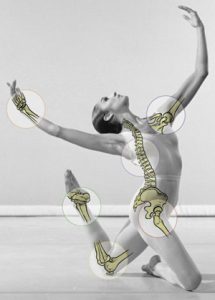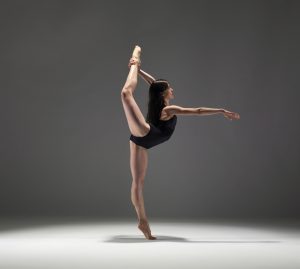Injury Prevention for Dancers- just like elite athletes
Dance is considered to be an art form- its dancers, artists. Certainly Artistic Directors might favour a particular aesthetic, line or body shape to fit their vision. It is, however undeniable that dancers are also athletes with high physical demands from a very young age. Muscular strength, endurance, joint stability, power and cardiovascular ability as well as psychological readiness are all essential requirements for every dancer. From an injury prevention point of view it is important to treat artists as athletes so we can measure and compare function objectively in an effort to predict and prevent injury. In doing so we can apply the large body of Sports Physiotherapy evidence to dancers to maximise their management and outcomes.
Because every dancer has a different body make-up, one of the preferred ways to help a dancer prevent injuries is to perform an individual dance assessment and from this process provide the dancer with an individualised program to strengthen or lengthen the body (or both) and to fine-tune technique.
What is a dance assessment?
Dance assessments evaluate a dancer’s posture, strength, joint range of moti on and evidence of any pre-existing injury. With these findings a Sports Physiotherapist can evaluate the likelihood of future injury and use the latest research to provide an individual plan to combat any deficits and maximise the dancer’s potential function. It also can provide answers to dancers’ questions such as “why cant i do centre splits?”, “why am i loosing turn out?”, “why can’t i progress to a specific technique”
on and evidence of any pre-existing injury. With these findings a Sports Physiotherapist can evaluate the likelihood of future injury and use the latest research to provide an individual plan to combat any deficits and maximise the dancer’s potential function. It also can provide answers to dancers’ questions such as “why cant i do centre splits?”, “why am i loosing turn out?”, “why can’t i progress to a specific technique”
What does the evidence tell us in dancers?
We know from dance research that low levels of muscular strength and power can be predictive of future injury (1). One study (2) divided dancers into two groups, one performing a specific strength program (non-dance based) and the second group performing dance specific strengthening. Interestingly the results showed that strength gains (with no additional change in thigh circumference) were significantly higher in the group performing a targeted, non-dance based strength program.
Research also confirms to us that poor core strength is associated with an increased risk in upper and lower extremity injuries (3).
In keeping abreast of the evidence available we are able to provide programs that we know will provide significant improvements in dancers’ function and injury prevention. Specifically we know that targeted improvements in strength with a Pilates or gym program will make significant gains.
So what do we test in a dance assessment?
The dance assessment is extremely thorough, taking about 45 minutes to get through the evaluation alone. We look at every joint, testing range of motion and ligament integrity. Then we make an assessment of muscle length and strength including core strength which helps us to determine if the dancer falls into the risk category for future injury. We look at stability and proprioception which underpins every movement in dance. Finally we do specific functional testing for dance to look at the quality and control of movements and positions specific to dance including but not limited to releve, 1st to 5th positions, and pliaes. We take objective measures where possible, which means we can rate how well each individual component is achieved, allowing us to compare sides, and where possible to compare to normative values, that is, what a dancer should be achieving.
So who should do a dance assessment?
Any dancer is able to complete the assessment, however it is highly recommended for anyone considering moving on to pointe, anyone struggling with constant niggles or repeat injuries, anyone moving into a full time dance course, any dancer wishing to pursue a career in dance and any dancer who wants to improve performance or reduce injury risk.
In dealing with athletes at Gold Coast Physio and Sports Health, we like to prevent injuries before they begin.
Erin Fitzgerald is a Sports Physiotherapist who has a special interest in dancers and acrobats. She performs dance assessments, dance-specific pilates classes and treatments out of the Runaway Bay and Burleigh clinics.
References
1. Koutedakis Y., Stavropoulis-Kalingou A., Metros G. The significance of muscular strength in dance. J Dance Med Sci. 2005; 9(1):29-34
2. Koutedakis Y., Sharp NC. Thigh muscles strength training, dance exercise, dynamometry, and anthropometry in professional ballerinas. J Strength Cond Res. 2004;18(4):714-718
3. Peate W.F., Bates G., Lunda K., Francis S., Bellamy K. Core Strength: a new model for injury prediction and prevention. J Occup Med Toxic. 2007; 2:3

